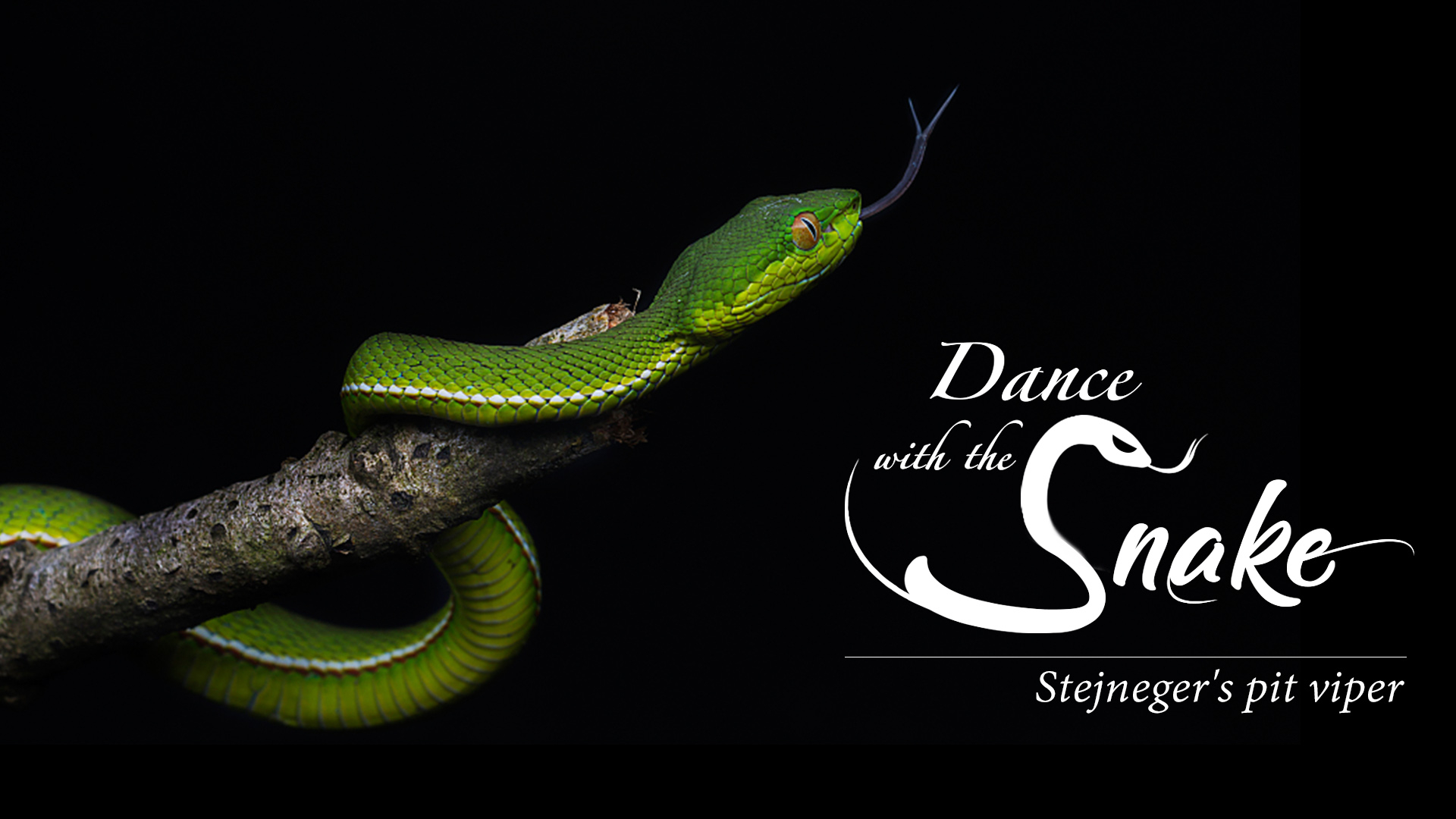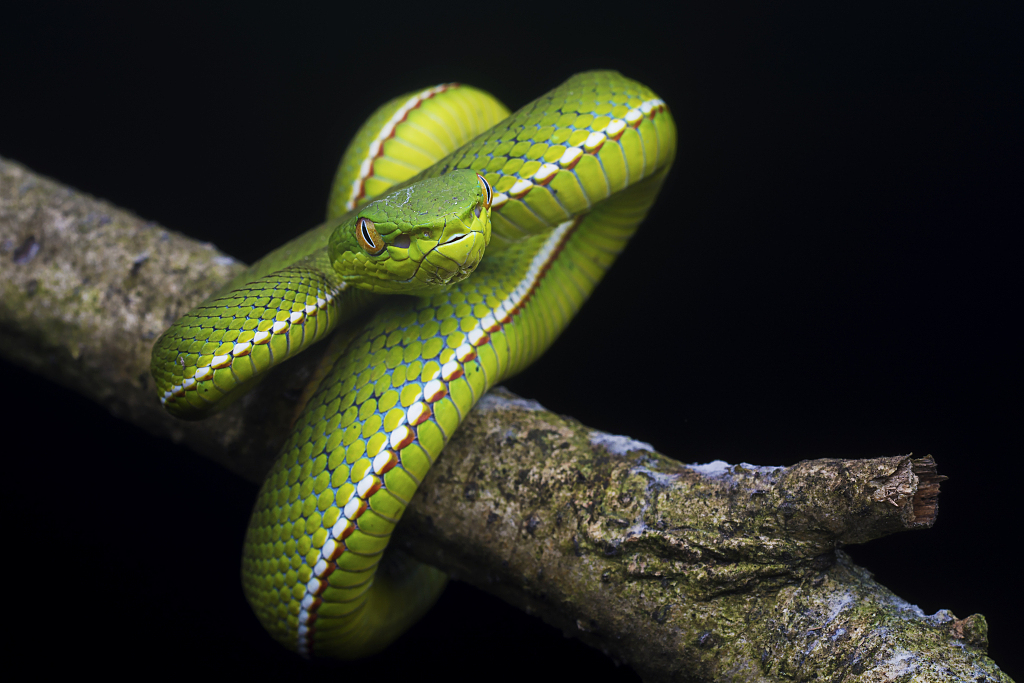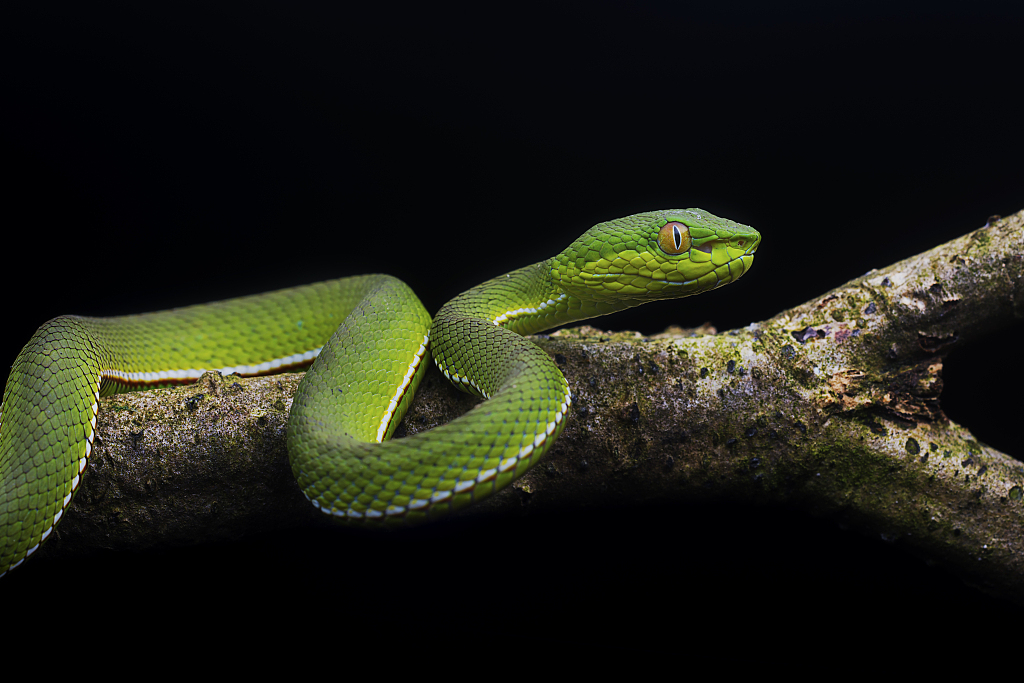

When talking about a venomous snake, the question sooner or later arises whether the snake's bite is fatal or not. However, this is not necessarily the critical question – some snakes, though their venom is not life-threatening, could still be more dangerous than the so-called fatal snakes.
The Stejneger's pit viper, commonly known as the Chinese pit viper, is a venomous snake endemic to Asia.

General information about the Stejneger's pit viper. /CGTN Graphic
This snake likes to spend time around water, such as mountain streams. It usually hangs in bamboos and trees, camouflaged by its body color that shines in different hues of green, with a prominent bi-colored stripe of red and white (male) or white only (female) on its belly.

A male Stejneger's pit viper showing its stripe. /VCG Photo
Due to reported cases of snake bites, there are a lot of misunderstandings about this viper's toxicity. In fact, its venom is not life-threatening. Stejneger's pit viper's venom is hemotoxic, and compared to the fatal neurotoxic venom of snakes such as cobras, this venom is not strong enough to kill a person quickly.
However, non-fatal venom does not mean it is not dangerous. Due to the snake's habit of hiding in trees, people are very likely to hit its body and get bitten while walking in the forest. Its venom will cause extreme pain to the wound. If the wound is not medically treated as soon as possible, the flesh around it will become festered. In a few cases, people who got bitten even fainted.

Stejneger's pit viper. /VCG Photo
The Stejneger's pit viper is common in China's Guangdong, Guangxi, Fujian and Taiwan provinces. In hot summer, they will sneak in people's houses for coolness.
The current conservation status of the Stejneger's pit viper is "Least Concern," which means the population is not under significant threats.
About Dance with the Snake series:
China is home to a large variety of snake species, which are an important part of the ecosystem, contributing a lot to maintain the ecological balance of China's environment. This series is going to present you with the endangered and dangerous snakes in China, with introductions of how to recognize them.
(Cover image via VCG, designed by CGTN's Du Chenxin)
(If you want to contribute and have specific expertise, please contact us at nature@cgtn.com.)

Copyright © 2018 CGTN. Beijing ICP prepared NO.16065310-3
Copyright © 2018 CGTN. Beijing ICP prepared NO.16065310-3